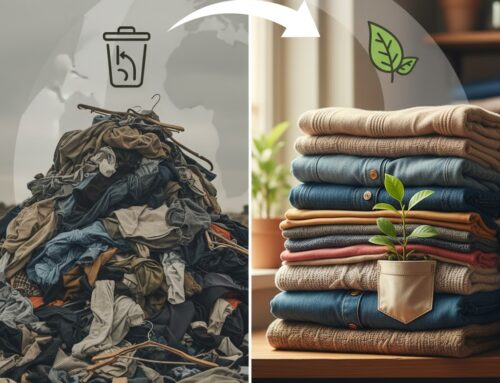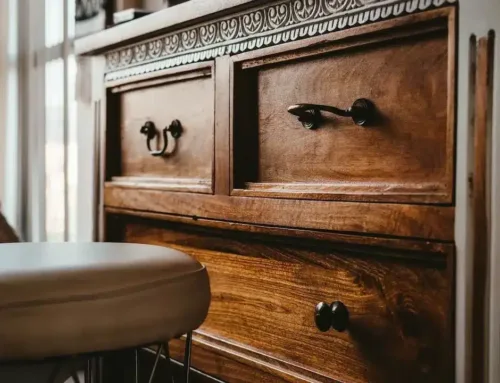Transform thrift store books into affordable, stylish wall art while supporting local causes. By repurposing old book pages, you can create one-of-a-kind decor using vintage encyclopedias, nature guides, art books, children’s books, or classic literature. Each type offers unique visuals like maps, botanical prints, playful illustrations, or elegant typography. Prices typically range from $1 to $8, making this a cost-effective way to decorate your space. Plus, buying from places like City Thrift benefits community programs like City Union Mission in Kansas City. Whether you frame pages, make collages, or use canvases, this DIY project is easy, budget-friendly, and environmentally conscious. Visit thrift stores often to find fresh options and unleash your creativity.
Best Types of Books for Wall Art Projects
Thrift store books can vary widely in their visual appeal and suitability for wall art. Here are some standout categories to keep an eye on during your next treasure hunt.
Old Encyclopedias and Reference Books
Vintage encyclopedias are a goldmine for wall art enthusiasts. These hefty books often feature detailed illustrations, maps, anatomical diagrams, and scientific plates that add a scholarly, vintage vibe to any space. The aged paper lends a sense of history, and the large, crisp images are perfect for framing. Keep an eye out for older editions, especially medical or geography references, as they often include fascinating anatomical drawings and beautifully detailed maps.
Field Guides and Nature Books
Field guides are a fantastic way to bring the beauty of nature indoors. These books often include botanical prints, bird illustrations, butterfly collections, and wildlife photography. Popular finds like Audubon bird guides, wildflower identification books, and tree guides offer stunning visuals paired with educational details like range maps and seasonal notes. Their intricate artwork can transform a wall into a window to the natural world.
Coffee Table Art Books
Large-format art books are a thrifting jackpot for wall art projects. These oversized books showcase high-quality reproductions of paintings, photography, and graphic design. Architecture books, museum catalogs, and photography collections are especially rich in striking imagery. Their large size and premium print quality make them ideal for creating statement pieces. Don’t forget to peek under dust jackets – sometimes the covers themselves are works of art.
Children’s Picture Books
Children’s picture books bring a burst of color and whimsy to your decor. Their playful illustrations are perfect for kids’ rooms, kitchens, or any space that could use a cheerful touch. Look for books featuring animals, fairy tales, or seasonal themes. The vibrant imagery not only adds charm but can also evoke a sense of nostalgia, making them a fun and versatile choice for creative projects.
Classic Books with Decorative Text
Sometimes, the beauty lies in the details of the text itself. Classic literature often features elegant typography, ornate title pages, and decorative elements that are hard to find in modern books. Pages from these books can be grouped for a literary-themed gallery wall that feels timeless and sophisticated.
| Book Type | Typical Price Range | Best Visual Elements | Ideal Room Placement |
|---|---|---|---|
| Encyclopedias/Reference | $1.79–$3.00 | Maps, diagrams, scientific images | Home office, study, living room |
| Field Guides | $2.00–$6.00 | Botanical and wildlife art | Kitchen, bathroom, bedroom |
| Coffee Table Art Books | $3.00–$8.00 | High-quality art reproductions | Living room, dining room, hallway |
| Children’s Picture Books | $1.00–$3.00 | Colorful, playful illustrations | Kids’ rooms, kitchen, playroom |
| Classic Literature | $1.79–$4.00 | Decorative typography, borders | Study, bedroom, reading nook |
How to Pick the Right Books at Thrift Stores
Finding the ideal books for your wall art project requires a mix of strategy, attention to detail, and a bit of creativity. Here’s how to make the most of your thrift store hunt.
Checking Page and Paper Quality
The success of your book page wall art hinges on the quality of the pages you choose. As you browse, take a moment to flip through several pages of each book. Look for pages that are intact and free from stains, tears, or water damage. These imperfections can detract from the final look of your artwork.
Pay close attention to the paper itself. Thick, matte pages are ideal – they hold up better over time, especially when framed, and they resist wrinkling or curling, even in humid conditions. On the other hand, avoid books with thin or glossy paper, as these can be harder to work with and may not age well.
Don’t be discouraged by worn covers; they often hide pristine interiors. Carefully remove any loose pages and inspect the binding. Once you’ve confirmed the quality of the pages, consider whether the designs or illustrations fit your aesthetic and the space you’re decorating.
Looking at Visual Appeal
The visual style of the book pages you select is just as important as their condition. Think about how the colors and imagery will blend with your decor. Are you drawn to warm earth tones, vibrant pops of color, or classic black-and-white designs? Botanical prints or vintage illustrations bring a timeless elegance, while colorful images from children’s books can add a playful vibe to casual spaces.
Consider the size and detail of the illustrations, too. Larger images can stand alone as statement pieces, while smaller, intricate designs are perfect for creating gallery walls. The theme of the book also plays a role – vintage scientific diagrams can add a scholarly feel, while decorative title pages can make for unique, eye-catching accents.
Shopping Tips at City Thrift
Once you know what to look for, head to City Thrift stores to put your plan into action. These stores are a goldmine for book hunters, offering a constantly changing selection. With thousands of new items arriving daily, each visit is an opportunity to discover something special.
“City Thrift shopping isn’t your average shopping experience; it’s a treasure hunt!” – City Thrift
Treat your search like an adventure by visiting multiple City Thrift locations in the Kansas City area. Stores in Overland Park, Shawnee, Waldo, Blue Springs, and Lawrence each receive unique donations, so expanding your search gives you access to a broader variety of books.
Timing is everything. Many City Thrift locations restock throughout the week, so stopping by on different days can increase your chances of finding fresh inventory. Don’t stick to just one section – art books, children’s books, and even general fiction can hide unexpected gems. Always check under dust jackets, as the covers themselves might be visually striking.
When you find a promising book, take the time to inspect it thoroughly. Flip through the pages to uncover hidden treasures – sometimes the best illustrations are scattered throughout the book. And since thrift store prices are budget-friendly, you can afford to experiment with different styles and ideas without worrying about overspending.
DIY Ideas for Book Page Wall Art
Transform thrifted book pages from City Thrift into stunning wall art with these creative DIY projects. Whether you’re a crafting novice or a seasoned pro, these ideas let you experiment freely without worrying about costly mistakes.
Here are a few ways to turn those pages into eye-catching decor.
Framed Prints from Book Pages
Framing book pages is one of the simplest ways to create elegant wall art. This method allows each page to stand out while contributing to a cohesive gallery wall. Look for pages that align with your theme – like botanical prints from field guides, vintage illustrations from children’s books, or beautifully styled text from classic literature.
Trim the pages to fit standard frame sizes, such as 8×10 or 5×7 inches, which makes it easier to find budget-friendly frames at thrift stores. Adding a matte to the frame enhances the presentation. White or cream mattes offer a timeless look, while colored ones can tie together pages with similar tones.
Before hanging, lay out the frames on the floor to experiment with spacing and arrangement. Using an odd number of frames often creates a more visually appealing display. Mixing frame sizes can add variety, but keeping the frame colors consistent ensures the wall looks polished.
Mixed Page Collage Art
Collage art is perfect for those who want to combine pages from various books into a single piece of layered, textured artwork. This technique not only makes a bold statement but also hides any imperfections in the pages.
Start by gathering pages from different sources – encyclopedias, nature guides, art books, or even decorative text pages. The mix of paper types and printing styles adds depth and richness to the final piece. Use scissors, glue (or Mod Podge), and a sturdy backing to assemble your collage.
Begin with a base layer of larger pages, then build up with smaller, detailed elements. For an organic look, tear some pages rather than cutting them cleanly. This creates softer edges and a vintage feel. Let some pieces extend beyond the edges of your backing and trim them later for a polished finish. Experiment with layering to create natural shadows and depth, making your collage truly one of a kind.
Canvas and Frame Display Projects
Canvas projects offer endless possibilities for creating custom book page art. Blank canvases, available in various sizes at craft stores, provide a sturdy base for your designs.
To attach book pages to a canvas, use a decoupage medium both underneath and on top of the pages. This secures the pages while protecting them from wear and humidity. Smooth out air bubbles carefully – don’t worry about slight overlaps, as the medium dries clear.
For a rustic touch, consider using old window frames. The individual panes are perfect for showcasing different pages, and the weathered wood adds charm. Cut the pages to fit each pane and secure them with a small amount of adhesive.
Repurposed picture frames are another creative option. Remove the glass and backing, then adhere book pages across the opening, much like you would with a canvas. Secure them from behind using small staples or adhesive. This technique creates a dimensional piece that plays with light and shadow.
For larger displays, group multiple canvases together. This works especially well if you’re using pages from the same book or series, like encyclopedias or nature guides, to maintain a consistent theme. Plus, canvases are durable and can handle slight humidity changes, making them a practical alternative to traditional framed art.
These projects are not only fun but also a great way to upcycle old book pages into beautiful, personalized decor for your home.
Conclusion
Turning thrift store books into wall art blends affordability with a touch of personal flair and an eye toward sustainability. The tips shared earlier make it easy to craft something that’s both stylish and meaningful.
DIY book page wall art is not only accessible but also incredibly versatile. Whether you stumble upon vintage encyclopedias with a charming patina, field guides bursting with botanical illustrations, or classic novels with elegant typography, each book holds the potential to transform your space uniquely.
If you’re in Kansas City or nearby areas, City Thrift stores are a fantastic resource for finding these materials. Plus, every purchase you make supports City Union Mission’s efforts to assist individuals experiencing homelessness.
“All proceeds from our thrift stores in Kansas City and the surrounding communities are kept local and benefit City Union Mission”, explains City Thrift.
The growing love for thrifted and vintage decor reflects a desire for pieces with character and history. Your book page wall art fits right into this trend, offering a chance to create something truly one-of-a-kind while contributing to a more sustainable approach to home decor.
Make a trip to your local City Thrift and start exploring. With new items arriving daily, you’re bound to find inspiration and materials for your next creative project. It’s a win for your home, your budget, and the community!
FAQs
How can I use thrifted book pages to create unique wall art for my home?
Thrifted book pages can be turned into eye-catching wall art with just a bit of imagination. You might frame individual pages to create a timeless, literary aesthetic or arrange them into a collage with geometric patterns for a more contemporary feel. Want to add some texture? Try decoupaging the pages onto canvases or even furniture for a layered, artistic touch.
In your home, larger pages make great statement pieces for living rooms, while smaller snippets are perfect for creating gallery walls in bedrooms. For areas like kitchens or bathrooms, you can seal the pages with a waterproof finish to bring in a distinct, book-inspired charm. Plus, using thrifted books not only adds character to your decor but also gives old pages a second life – all while keeping things easy on your wallet.
How can I protect book pages used for wall art from damage, especially in humid environments?
To ensure book pages used for wall art stay in excellent shape, keep them in a cool, dry area with stable temperature and humidity levels. When framing, opt for UV-protective glass or acrylic to guard against fading, and consider using a fixative spray to protect the pages from moisture and dust. Avoid hanging your artwork in direct sunlight or humid spaces, and always handle the pages with clean, dry hands to reduce the risk of damage.
How can I find the best thrift store books for my DIY wall art projects?
For an impressive variety of books, swing by City Thrift between 9:00 AM and 9:00 PM. If you’re looking for a quieter experience, weekdays or earlier in the week are your best bet – fewer crowds mean more time to explore. With thousands of items restocked daily, regular visits can boost your chances of finding books that are just right for your creative wall art projects.
Look for books with one-of-a-kind illustrations, vintage typography, or textured paper. These details can add a unique touch to your DIY designs!






